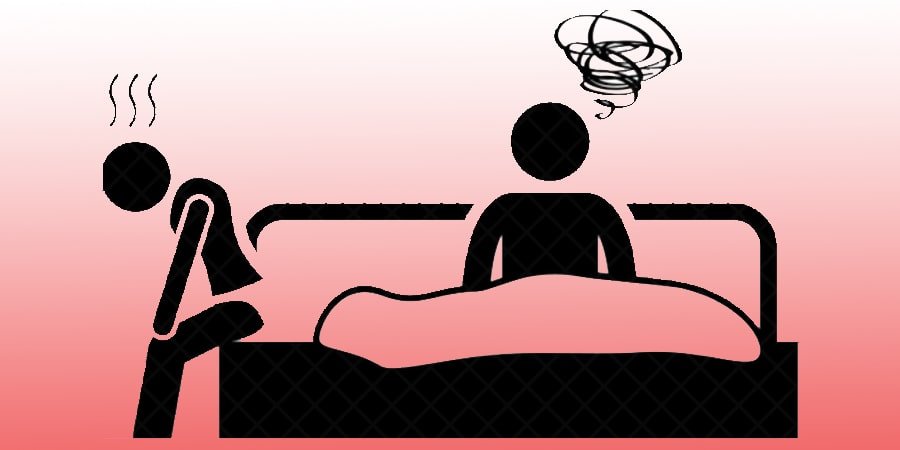Sexual Dysfunctions Causes, Symptoms, and Treatment

What happens when the bedroom becomes a battlefield?
Sex is one of the most fundamental human impulses. Most people desire and fantasize about engaging in sexual behavior, often having regular sexual relations with their partners.
Regular sexual activity involves a desire for sex, arousal during intimacy, and sexual pleasure. Consequently, sexual desire and intercourse are natural human behaviors.
However, issues can arise in this cycle. Sexual dysfunctions occur during sexual activity and are not caused by non-traditional habits. These dysfunctions often involve problems with pleasure, arousal, orgasm, or pain during intimate relationships.
Understanding the typical sexual cycle is essential to comprehend sexual dysfunctions. Experts agree on four phases of human sexual response:
- Desire: Sexual fantasies or a strong urge for sexual activities.
- Arousal: Sexual pleasure accompanied by physiological changes, such as male erection and female lubrication.
- Orgasm: Peak of sexual pleasure and tension release.
- Resolution: Relaxation and ease post-orgasm.
Sexual dysfunction refers to decreased desire or ability to achieve sexual fulfillment, affecting relationship satisfaction. These issues can occur in same-sex and opposite-sex couples and may be due to psychological, interpersonal, or physical factors, including medication side effects.
Sexual difficulties can be pervasive or situation-specific, caused by psychological, medical, or combined factors.
Main Psychosexual Dysfunctions
- Hypoactive Sexual Desire Disorder: Lack of sexual fantasies or desire. Factors like age, stress, and cultural background are considered in diagnosis.
- Sexual Aversion Disorder: Avoidance of sexual interactions, often linked to anxiety or relationship issues.
- Female Sexual Arousal Disorder: Lack of arousal and vaginal fluidity despite a desire for sexual activity, not caused by medical conditions.
- Male Erectile Disorder: Difficulty achieving or maintaining an erection, only diagnosed if it causes significant distress.
- Female Orgasmic Disorder: Absence or delay of orgasm, causing significant distress.
- Male Orgasmic Disorder: Lack of orgasm despite normal sexual satisfaction, not due to medical conditions.
- Premature Ejaculation: Orgasm occurring with minimal stimulation, diagnosed when it causes relationship issues.
- Dyspareunia: Genital pain during intercourse, more common in women, not diagnosed if caused by medical conditions.
- Vaginismus: Pain in the perineal muscles during penetration, causing distress and relationship issues.
Causes of Sexual Dysfunctions
- Biological Factors: Hormonal imbalances, medical conditions, and medications can impact sexual function.
- Psychological Factors: Stress, anxiety, PTSD, and negative sexual experiences can affect sexual responsiveness.
- Social Factors: Family and societal attitudes, religious upbringing, and traumatic sexual experiences influence sexual behavior.
- Sociocultural Factors: Cultural norms and values, gender differences, and sexual orientation impact sexual preferences and behavior.
Treatments of Sexual Dysfunctions
- Anxiety Reduction: Techniques like systematic desensitization and psychoeducation help reduce anxiety related to sexual activities.
- Directed Masturbation: Helps individuals, especially women, become comfortable with their sexuality and achieve orgasm.
- Attitude and Thinking Changes: Cognitive therapies focus on overcoming negative thoughts and enhancing sexual pleasure.
- Skills and Communication Training: Encourages partners to communicate their sexual preferences and improve sexual skills.
- Couples Therapy: Addresses relational issues that contribute to sexual dysfunctions.
- Medications and Physical Treatment: Pharmacological treatments and physical therapies address underlying medical conditions affecting sexual function.
Conclusion
Sexual dysfunctions are complex and multifaceted, affecting both psychological and physical aspects of human sexuality. Understanding the normal sexual cycle and the factors contributing to dysfunctions is crucial for effective treatment. With proper therapy, communication, and sometimes medication, many individuals and couples can overcome these challenges and improve their sexual and relational satisfaction.